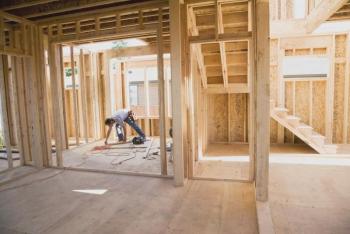Maine’s housing affordability crisis is not a zoning problem — it’s an economic one
Zoning reform has become the Legislature’s preferred answer to Maine’s housing crisis. It’s tidy, inexpensive, and offers the reassuring glow of “doing something.” But in the parts of the state where the shortage is most acute — coastal towns, service-center cities, and tourism-driven regions — zoning was never the real barrier. Treating it as the centerpiece of state housing policy has let lawmakers dodge the harder conversation: the economics of actually building housing in Maine.
Communities figured this out long before Augusta.
When Rockland passed a $10 million housing infrastructure bond, the goal wasn’t to squeeze more theoretical density onto a zoning map. Rockland was reacting to the real bottleneck: the cost of preparing land so housing can exist at all.
Sewer extensions, water upgrades, stormwater systems, street improvements, and electrical work routinely push site costs well into six figures per unit in coastal towns. No zoning amendment fills that hole. Rockland stepped in because the State has not.
The same dynamic plays out across Camden, Rockport, Bar Harbor, Falmouth, and Yarmouth. In these markets, even a modest home now costs north of $400,000 before anyone hangs a porch light.
Construction bids keep climbing. Labor shortages slow everything down and raise financing costs. Infrastructure systems are aging or maxed out. Allowing a duplex, a fourplex, or a density bonus doesn’t change the reality that the underlying pro forma collapses under land prices, sitework, and interest rates.
Zoning makes something legal — it does not make it feasible.
Maine does have strong tools for deeply affordable rental housing, thanks to the Low-Income Housing Tax Credit and MaineHousing’s gap financing programs. But for middle-income housing — the 80–140% AMI households who keep our communities running — there is no comparable support. No workforce housing fund. No soft-loan pool. No risk-mitigation tools for small developers. No statewide infrastructure program.
Without these tools, zoning reform simply rearranges possibilities on paper.
If the Legislature wants progress where it matters most, it needs to pivot from land-use theory to development economics. That means legislation that gives communities and builders the tools required to close the gap between feasibility and construction.
A State Housing Infrastructure Fund should be the starting point. Local governments cannot absorb multi-million-dollar sewer and water upgrades one project at a time. A statewide program — grants or zero-interest loans tied directly to housing creation — would immediately unlock stalled sites in workforce-strained communities like Rockland, Camden, Bar Harbor, Bethel, Farmington, Rangeley, and Greenville.
Maine also needs a Workforce Housing Finance Program aimed squarely at the missing middle. Soft second loans, forgivable loans, and construction-to-permanent financing for 80–140% AMI units would mirror MaineHousing’s successful affordable rental programs but serve the segment where demand is highest and financing gaps are widest.
A Predevelopment and Risk-Mitigation Fund would give smaller developers a fair shot. The modest projects best suited to Maine’s villages and walkable neighborhoods often die before they start because engineering, environmental review, and early design come with real financial risk. A state backstop for part of these costs — paired with partial guarantees on construction loans — would help more builders take on small-scale, infill, and missing-middle projects.
The Legislature should also create a State Workforce Housing Tax Credit, a targeted version of the federal LIHTC model but tailored to middle-income rental and ownership units. Even a modest credit would attract equity and help close financing gaps in high-cost towns.
Finally, Maine should modernize Affordable Housing TIF so municipalities can use it to support workforce housing, not just deeply affordable units. Communities willing to put their own skin in the game — through bonds, infrastructure commitments, or land contributions — should be eligible for matching funds or enhanced TIF flexibility.
Municipalities are already stepping up. Rockland has bonded for infrastructure. Communities across the state — Bangor, Brunswick, Yarmouth, South Portland, Scarborough, and others — have rewritten zoning, identified sites, and streamlined permitting. But they cannot fix the fundamental cost structure alone.
Zoning sets the stage; economics determines whether anything ever gets built.
If Maine wants more homes in the communities where workers are being priced out, the Legislature needs to move beyond symbolic zoning tweaks and adopt the financial tools that actually make housing possible.
Audra Caler is the Camden Town Manager



























